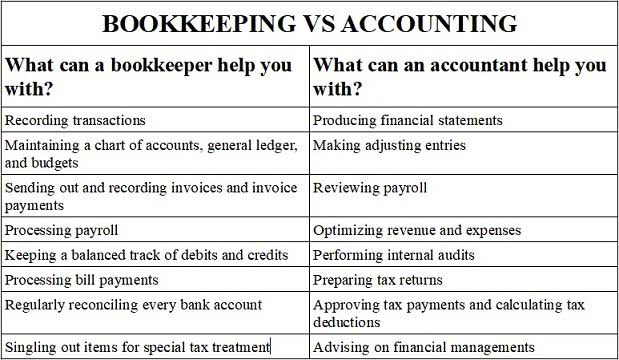
Free biweekly updates on local, state, and federal policy and advocacy issues affecting nonprofits. With a sweep account, you can access up to $5 million in FDIC coverage in a single account. With flexible financing to expand your business, update equipment and purchase real estate, we’re here to help turn your plans into reality. We’re here to help with flexible savings and investing options to keep your cash working while you focus on your business.
Firm of the Future
It is not necessarily earmarked, and it can be spent in any way management sees fit. In a nonprofit, however, some of your inflowing money is categorized as restricted funds, which means you can only spend those funds on the items that the donor or grant specifies. Efficient treasury management is critical for nonprofits to maximize the use of available nonprofit cash flow statement funds, optimize investment returns and minimize transaction costs. By implementing sound cash management practices and leveraging technology solutions, nonprofits can streamline treasury operations and enhance overall financial efficiency. Perhaps the most important financial policy for any charitable nonprofit is a conflict of interest policy.

Nonprofit Essentials
Some boards like to designate cash for certain purposes, such as a reserve fund or to be used for certain programs. If your organization has received cash from foundations or other donors that is restricted for a particular purpose, you cannot spend that cash on other purposes, even temporarily. Know how much of the cash you are holding is restricted either as to purpose (what it can be spent on) or time (when it can be spent) and subtract that amount from total cash to determine cash available for general operations. Keeping your funds in a brokerage account with a sweep program enables you to protect more of your organization’s money and significantly streamline your books.
- With so much focus on the organization’s mission, cash flow statements and balance sheets can fall by the wayside, often overlooked as a bothersome chore rather than an integral key to success.
- If you don’t, you aren’t alone—about 65% of Americans aren’t aware of their monthly spending amounts, and 84% of those who have a monthly budget report exceeding it.
- The most effective way to manage cash flow is to develop and maintain cash flow projections that look forward 12 months.
- If your financial records have been properly set up, this report is a simple monthly task.
- Additionally, you can work with a nonprofit investment advisor to purchase treasury bills as part of a rolling portfolio to continuously repurchase them after each yield.
If you are growing, budget for a profit.

Factor in lengthy processes to determine whether or not organizations get that funding in the first place, and it starts to become apparent why cash flow matters so much for nonprofits. Obviously, nonprofits need to raise money to operate since they aren’t profiting off of the sale of something. Their dollars go right back into the services they’re providing, so evaluating new and old fundraising opportunities is absolutely essential to maintaining financial health.

AVAILABLE NOW – Great Beginnings for New Nonprofits, a free 8-part email course on fundraising, financial management and other “must know” topics. Growing organizations need an increasing amount of cash, called working capital, to operate. Growth means more demands on cash to pay for expenses such as new equipment and employees, or to finance the purchase of supplies.


I implemented a monthly budget versus actuals analysis and review process as well as a monthly and quarterly forecasting process that engaged budget owners and helped my team better forecast and manage cash flow. Besides future income, cash inflows can also come from accounts receivable, pledges receivable or repayments of loans. Besides future expenses, cash outflows may be payments to vendors, payments on credit cards or loans, or purchases of fixed assets. Based on your current cash flow, previous financial performance, and expected income, create detailed budgets for your organization’s spending. Using both your historical financial data and financial projections will help you set realistic spending thresholds, which is crucial for effective planning and goal-setting.
- By signing up, you agree to our privacy policy and terms of use, and to receive messages from NPQ and our partners.
- This means that more than a third of nonprofits have investment accounts and actively steward their funds by investing them.
- The most basic (and important) solution is drawing on an organization’s own cash reserves, which supply the working capital to keep current on payroll, rent, and other expenses.
- As mentioned earlier, traditional bank accounts have a limited amount of FDIC coverage—only up to $250,000 per account is insured.
- They understand that overhead expenses are an essential part of success in project, so it’s unlikely to come as much of a surprise that your organization has certain expenses that need to be considered, too.
- Remember, the single most important difference between a regular business bank account and a bank account for nonprofits is the higher level of regulation surrounding the source, storage and use of your collected funds.
- There’s nary a nonprofit leader working today who hasn’t been subject to such ‘bizsplaining‘ at one point or another.
Close unneeded cash accounts.
Consider hiring a trainer to come in and give a few classes or rely on the plethora of great, free tools available throughout the internet. Often, board members are great resources for this sort of thing, so don’t hesitate to ask for the kind of help you need. In addition to stock gifts, the best tools allow nonprofits to easily accept multiple alternative forms of donations, like donor-advised fund (DAF) grants, cryptocurrency, and endowments. All of these donation types are more popular with high-capacity donors, and Double the Donation reports that https://www.bookstime.com/ nonprofits’ focus on major donors is staying strong since the most impactful donors are giving more even while total donations decrease. Finally, many nonprofits realize the fundraising potential of non-cash donations like stocks and cryptocurrency and are taking steps to streamline the donation process for these gifts. In the past, some nonprofit professionals have been wary of setting aside too much funding that could be put to work for their mission right away, leading to small reserve funds that aren’t sustainable or sufficient.
- Additionally, the statement of cash flows is used by for-profit and nonprofit organizations alike, all of which refer to it using similar terminology (statement of cash flows, cash flow statement, or cash flow report).
- One fundraising strategy that has worked well is to quantify in the solicitation that half of your donation will go to the “Children’s Shelter.” So the balance can be used for other purposes necessary for the organization’s operations.
- If you’re experiencing a cash flow shortage or chronically encounter shortages, talking with your vendors might actually help.
- This article will discuss ways in which cash flow impacts—and is impacted by—the way a nonprofit organization does its business.
- CDs for nonprofits often have fixed interest rates and maturity periods, such as one or five years.
Smith & Howard Advisory, LLC and its subsidiary entities are not licensed CPA firms. The entities falling under the Smith & Howard brand are independently owned and are not liable for the services provided by any other entity providing services under the Smith & Howard brand. Our use of the terms “our firm” and “we” and “us” and terms of similar import, denote the alternative practice structure conducted by Smith & Howard PC and Smith & Howard Advisory LLC. The banker will help you review your savings, credit, and more – and provide you personalized solutions. Additionally, for compliance purposes, it’s important to flag and track any large donations received to ensure you have everything in order in case of an audit.
You can optimize your budget to maximize ROI in your nonprofit by evaluating the profit and loss of each of your programs. Then rank the programs to evaluate them by different factors such as the number of donations they bring in, the number of people they serve, and how much they cost. Consider cutting the worst-performing programs in order to reallocate those costs to places where your funds can go further and have a greater impact. According to the 2018 State of the Nonprofit Sector Survey report, fewer than 25% of nonprofit organizations had saved a six-month cash reserve, and most did not have even three months of expenses saved [3].
